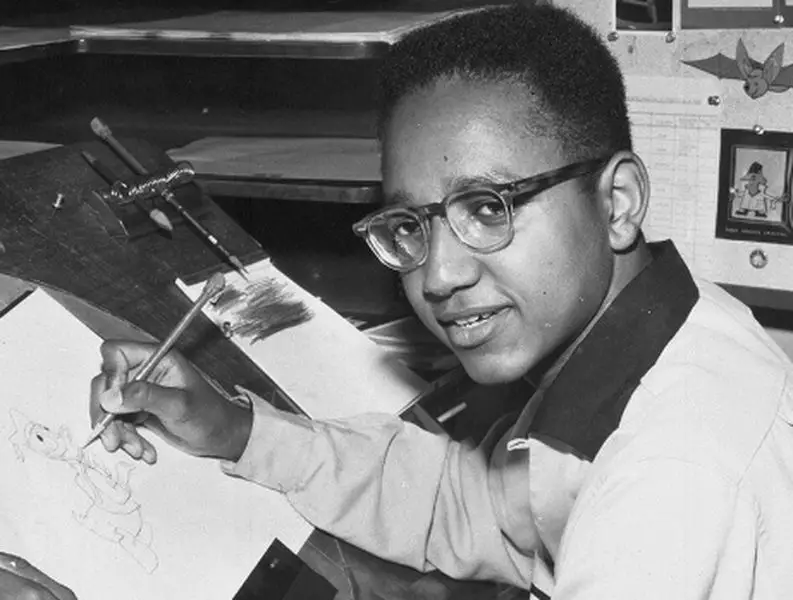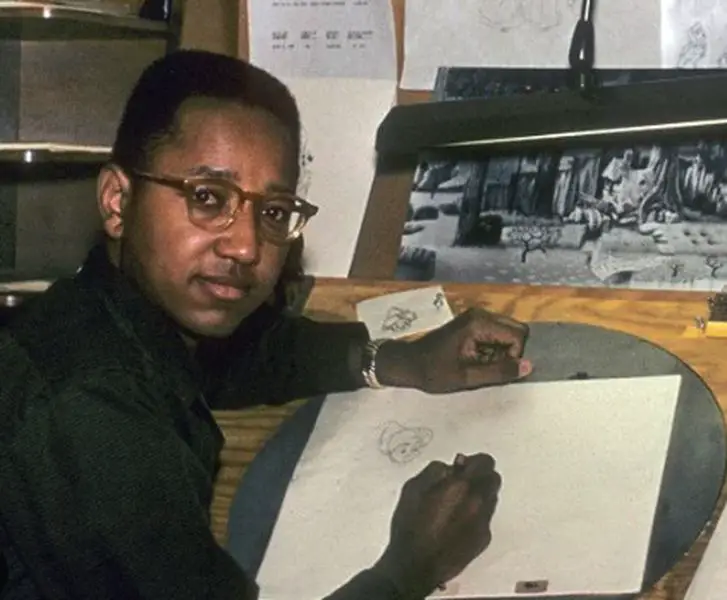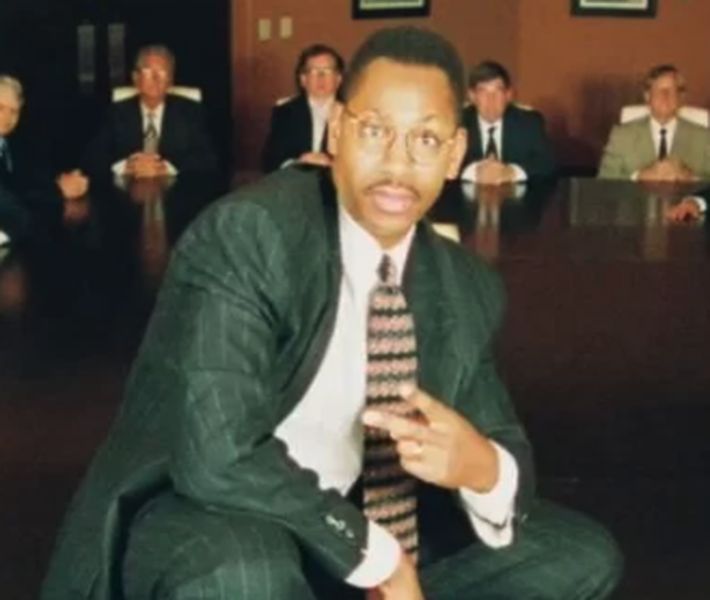Thomas Ronald Washington is a fictional character created for the TV series “Atlanta” by Francesca Sloan and Joseph Adcock.
In Episode 8 of Season 4, the show takes a documentary-style approach and focuses on the first black CEO of Disney during the 1992 Los Angeles riots.
In the episode, Thomas becomes the CEO of The Walt Disney Company after the temporary CEO dies during the riots.
The board of directors decides to reinstate him as CEO, but it turns out it was a case of mistaken identity due to a similarity between his name and that of the preferred candidate for the position.
Is Thomas Ronald Washington Real?
No, Thomas Ronald Washington is not a real person. Disney, as a company, never had a black CEO. So the story Thomas Washington being the company’s CEO in the show is fictional.

Lot of people believe that the story of Thomas Ronald Washington is inspired from, Floyd Norman, the first African-American animator at Disney.
Floyd Norman shared that he didn’t face much racism while growing up in California.

When he applied to work at Disney, he didn’t realize his race might be a disadvantage. He said there were opportunities for black people, but not many applied.
When Floyd Norman joined Disney, it was never a big deal for him. In several instances, Floyd stated that the perception of companies not hiring people of color back in the day was a misconception.

While working at Disney, Norman collaborated with people of all races and nothing stood out as racist activity to him.
When Norman was 65 years old, Disney suggested that he should retire. However, Floyd wanted to keep working.
He believes creative people like him don’t want to stop working even as they get older.
Suggested Read: Sammy Wilk Age, Siblings, Girlfriend, Net Worth
Unveiling the Story of Thomas Ronald Washington
The Atlanta season 4 episode seems to be a parody of a documentary about Disney’s first black CEO working on “the blackest movie of all time.”

As per the show, in the early 1990s, a young Black animator named Thomas Washington was mistakenly chosen as CEO of The Walt Disney Corporation.
It was supposed to be a white man named Tom Washington, but there was a name mixup.
Thomas Washington, as a Black animator, wanted to create animation relevant to his culture. He started with the movie “A Goofy Movie” and took inspiration from his son, Max, for the character “Max Goof.”
He wanted to make a groundbreaking movie exploring African-American culture, but Disney changed some scenes to fit their preferences.
Sadly, after being dismissed, Thomas Washington is said to have taken his own life, but his body has not been found.
Suggested Read: Emily Wilkinson, Wife of Baker Mayfield & Their Cheating Scandal
Challenges and Controversies
During the filming of the movie, Thomas Washington’s behavior became aggressive towards his wife and child, leading to their divorce.
The Walt Disney Corporation became concerned about Washington’s ability to lead when he started to display Goofy-like traits, including his laugh.
Disney offered him $75 million to step down as CEO, but he refused.
The original ending of “A Goofy Movie” involved Goofy and Max facing police assault during a traffic stop related to a human rights activist, Huey P. Newton. This ending was considered inappropriate, and a new scene was created to replace it.
In 1995, after Disney changed the ending of his film, Washington disappeared. His car was found in the same lake where he used to fish with his child, but his body was never found.
There is a final video of Washington before his death, where he expressed his disappointment with the film’s changes and his desire to finish it.
Washington left Disney after the movie’s premiere because he was upset that his original idea had been abandoned.
Some Disney employees suspected that his death might not have been an accident.
His widow concludes by acknowledging that he was able to create “the blackest movie of all time,” and his impact still resonates today.
Suggested Read: Rapper Rakim Age, Wife, Kids, Net Worth
Who is Thomas Ronald Washington?
Thomas Ronald Washington is a fictional character from the show “The Atlanta.”
He attended the Savannah College of Art and Design and dreamed of becoming an animator for Disney.
After attending a class by Art Babbitt, the creator of Goofy, Disney hired him.
In his first job, he worked as an assistant animator on DuckTales the Movie: Treasure of the Lost Lamp.
When Disney’s temporary CEO died during the 1992 riots, the board intended to hire a white male named Tom Washington.
However, due to a mixup in first names, Thomas Ronald Washington ended up being appointed as CEO.
As the new CEO, Thomas made significant changes in the company.
He questioned why Mickey Mouse had Pluto as a pet and Goofy as a friend, so he created “the blackest movie of all time” to explore various aspects of American society.
Suggested Read: Charlotte Lawrence Bio, Age, Boyfriend, Height, Net Worth
The Impact and Significance of Thomas Ronald Washington
In the show “Atlanta,” Thomas Ronald Washington, a fictional character, created a groundbreaking Disney film called “A Goofy Movie.”
Before “A Goofy Movie,” there were no cartoons featuring characters of color. Disney wanted to bring diversity into their films, and “A Goofy Movie” became an important step in that direction.
Similarly, Thomas Washington wanted to create something meaningful to him and his culture.
He used Goofy’s story to shed light on the challenges faced by black fathers.
The episode in the show feels like a mockumentary, even though it’s not based on true events, it had a personal and genuine touch to it.
Many argue it, but the episode had a positive impact on society when it showed how people of color were treated in the ’90s.

